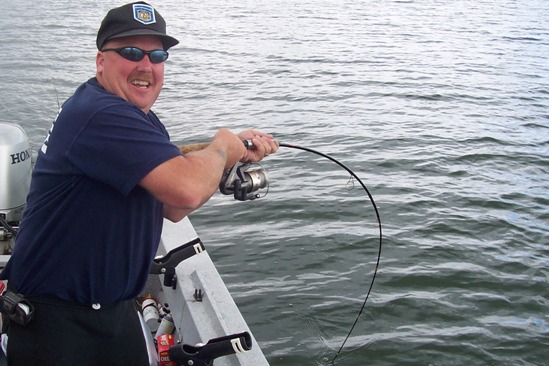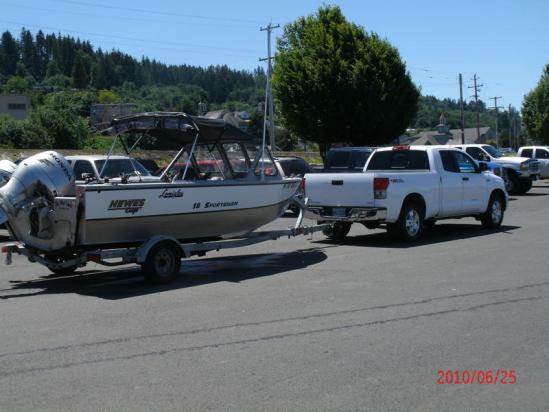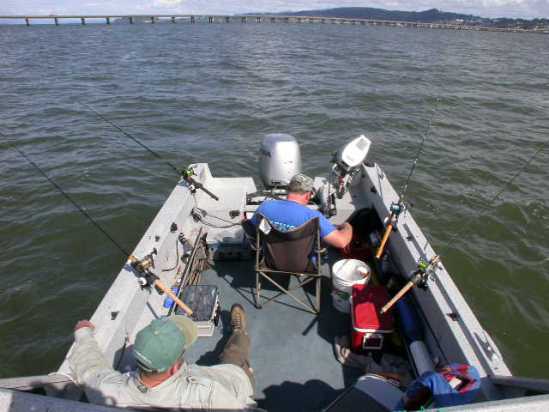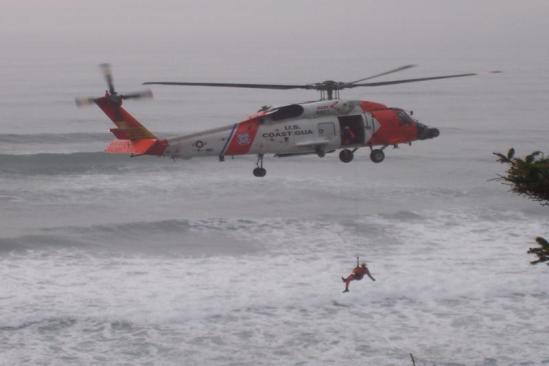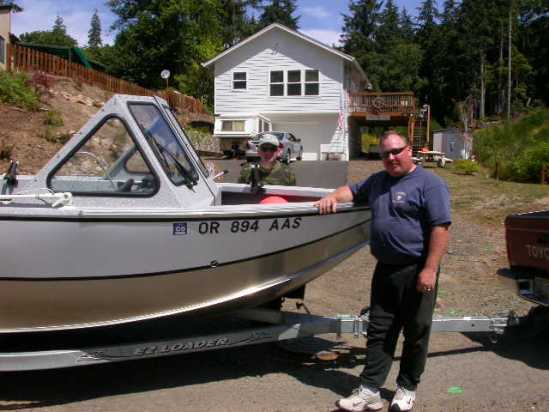Columbia river USA, sturgeon and salmon (part 3)
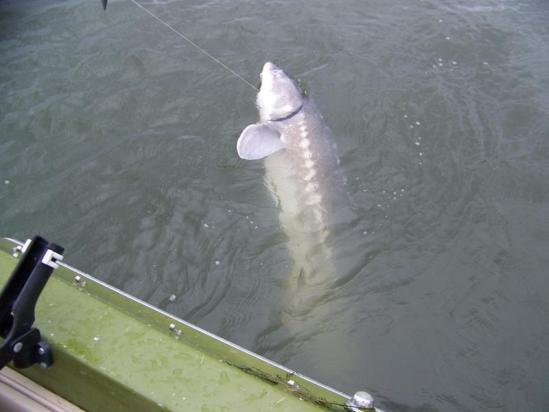
I am going to get into talking about the fun part this article, “fishing itself”. With the current season for Sturgeon coming to an end, I will focus first on some of the specifics of sturgeon fishing these waters, which is very different from fishing up river 30-40 miles.
The gear:
I personally prefer my “Lamiglass: brand fishing rods, which happen to be produced about 80 miles from Astoria in southern Washington State in Woodland. A medium action provides the sensitivity to feel the faintest nibble, yet enough backbone to handle a large fish, 8 – 10 feet in length and 350 – 400 lbs. They are also guaranteed free replacement if you break one and I usually break 1 or 2 each season on the sturgeon. I broke the first one of the year this past weekend, landing a 59” fish, which is usually when you will break it! These fish tend to start going crazy when netted or tail snared. If you do not have, enough line out the tip of the pole takes the impact of the thrashing.
.
My choice of reels is the Penn 320 gfi – I have many different brands of reels, i.e. shimano, diawa, tide water etc, but the Penn has given be the durability to handle these fish in salt water conditions without any problems and they don’t cost an arm and a leg – under $100 us.
I prefer 30 lb monofilament, which has proven to be plenty to land a 400 lb fish occasionally. A large fish will tend to “roll” up in the line to attempt to cut the line with its razor sharp “scutes” or body armor. They are successful occasionally but if you keep the drag and line tight, it makes it more difficult for the fish to roll it up!
.
I prefer to fish in shallow water, on the sand / mud flats on the last of the flood tide and first couple of hours of the ebb in an attempt to ambush my prey as it approaches / feeds up out of the main channels onto the sand flats and returns to the channels on the ebb.
The fish are pursuing fresh clams, sand shrimp and anchovies on these sandbars, and the competition of crabs and other scavengers stay primarily in the deeper water. Hot Spots change from year to year and sometimes day to day, but I look for small channels, which are likely to funnel fish to these feeding grounds.
If we get into a good bite, I will note the time of day, tide status, and try to guess what the fish are doing (coming / going?) and that will be a first choice the following day at the respective time and location. A good GPS is critical. Many times a recurring bite will last several days until the tides change enough to make it unfishable due to nightfall. As a general rule, no bites in 30 – 45 minutes a move is necessary, even if only a few feet, which can make a difference. Low water and the early flood means fishing the deeper holes (because the sand flats are exposed and fish are forced to move with the tide). This is where good sonar is required to find the fish. I use a combo sonar/gps Garmin 540S which I find does the job nicely!
The Columbia River estuary, as I have spoken, has many hidden hazards the one must respect, i.e. hidden sandbars, submerged pilings, debris floating from up river, and dangerously strong currents. The average flow rate for the river is 190,000 cubic feet of water per second, which causes the contour of the bottom to be ever changing. The Columbia River provides more water to the Pacific Ocean, than any other river in North or South America. The river Starts in Canada and extends down through Washington state into Oregon for 1214 miles, before dumping into the pacific a few short miles past the city of Astoria.
Bait…. You are only permitted to use one pole per angler, and if I have only a couple people fishing I will likely start by putting out one anchovy, and one sand shrimp. On the second consecutive bite on either of the bait, I will change the other rod(s) to that bait. One day they may prefer anchovies, the next, sand shrimp. Fishing in deeper water (30 feet+) sand shrimp are much too fragile to hold up so I will fish anchovy or smelt or sometimes squid will do the trick on certain days! I will use scents, and those will vary day to day, and spot to spot, but WD40 on anchovies and smelt is always a wise choice.
Aluminum boats are the most common for the sport angler in these parts. Most will trailer there boat to the landing each trip, and the avg size of boat is 18’ to 24’. Deep sides are necessary as the afternoon winds pick up and swift currents. I use a “sea anchor” or drift sock as the tides weaken and the winds increase.
.
Sturgeon fishing, you are anchored up; often you will find yourself in a situation when you have a weakening ebb tide. Your boat is anchored east to west with the current east to west, but as the tide looses intensity, the wind out of the southwest / west results it the boat swinging in the stern from side to side with the winds, dragging your bait / sinker, making fishing difficult. The use of a drift sock off the stern of the boat, (corner closest towards the direction of the tide flow) will help hold the stern much more steady making if more fishable. I use a 50” diameter drift sock for my 18’ boat, which is very adequate in most cases.
.
These techniques and theories are my personal opinions. I am most certain you can ask 15 different anglers on many of the topics and you will get 15 different answers. These opinions reflect my personal experiences and opinions.
The next article, we will speak more about the upcoming salmon season for fall Chinook and Coho salmon runs. Until then, Cheers and happy fishing!
Dale Murff

